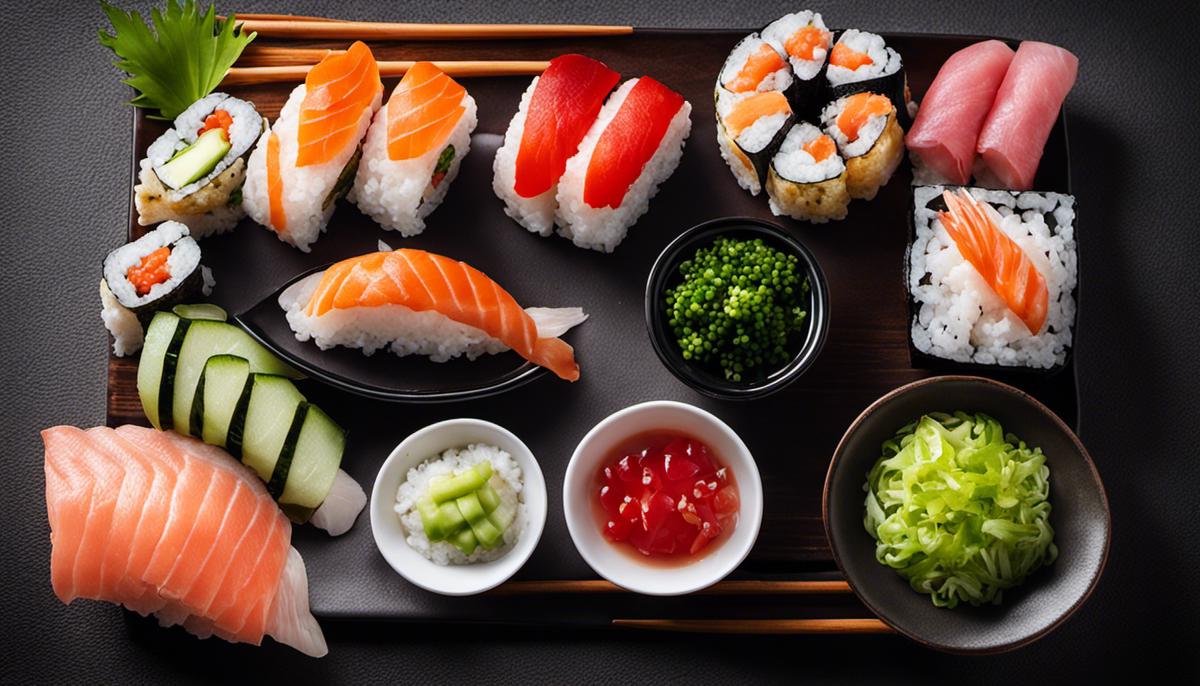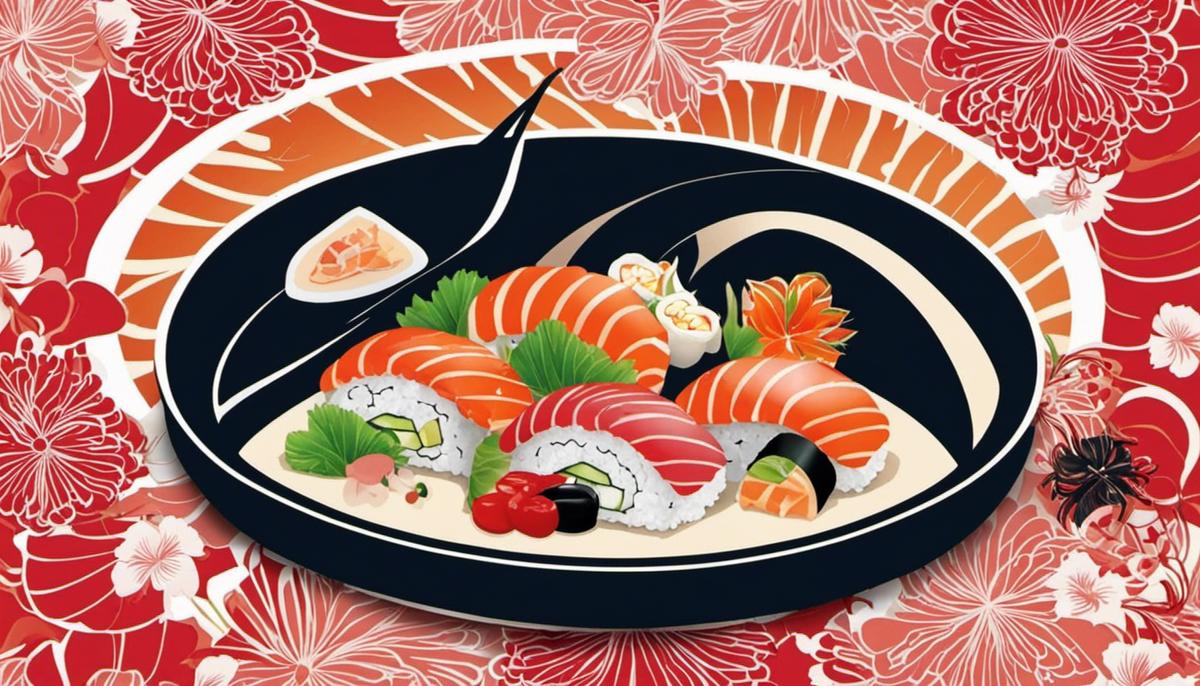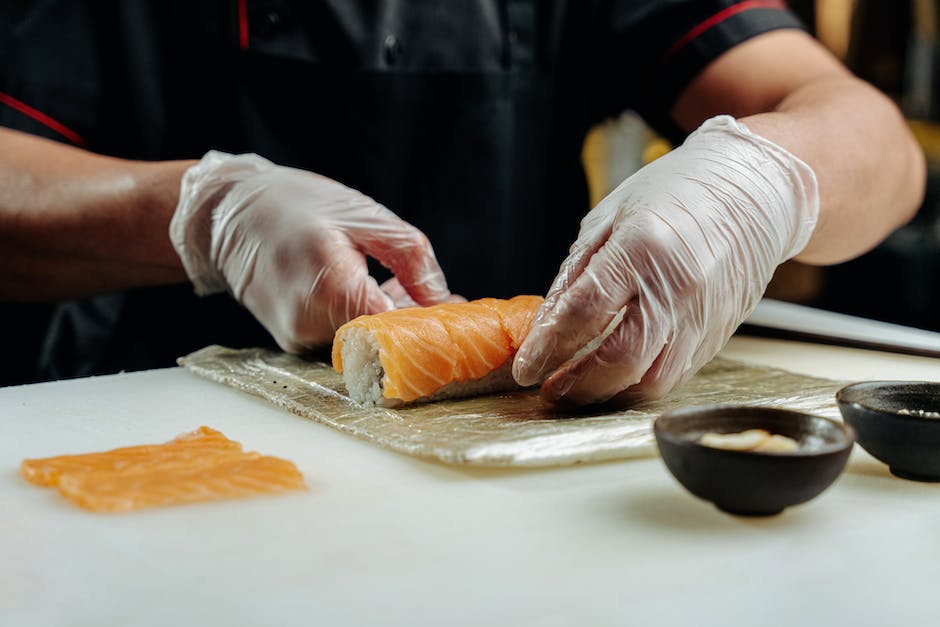Sushi, a staple of Japanese cuisine, is known worldwide for its simple yet sophisticated flavor profiles. Not only its tastes, but also its diverse forms enchant you, and to indulge in this art is nothing short of a pleasant experience. As part of this in-depth topic, we will first give a detailed introduction to how to prepare the basic sushi ingredients, starting with the perfect preparation of sushi rice, how to cut fish correctly, and how to choose vegetables or other ingredients that can be used. This will create a basic understanding of how different forms of sushi can be formed from these ingredients.
Preparing Basic Sushi Ingredients
A shining favor for aesthetic delights, sushi is undoubtedly a true triumph of the culinary world. In addition to the beguiling grace of its presentation, sushi also impresses with its versatility and simplicity of preparation – provided, of course, that you have mastered the art of sushi preparation. Today we are going to focus on exactly these aspects of how to properly prepare the necessary sushi ingredients.
An indispensable rule of sushi preparation is to use the highest quality ingredients. The taste and texture of your sushi are directly linked to the quality of the ingredients used. Your rice should be of excellent quality and specifically designed for sushi. This is the only way to achieve the sticky yet lump-free texture that is essential for sushi.
The fish should also be of the best quality, ideally sashimi quality. Remember that raw fish should only be consumed if it comes from safe and trustworthy sources. Whether you opt for salmon, tuna, or any other fish, make sure it’s perfectly fresh.
Your rest of the ingredients, such as wasabi, soy sauce , and pickled ginger , should also be of the best quality possible. A little dollop of wasabi will add a spicy spiciness to your sushi, while the soy sauce and pickled ginger will serve to refresh your taste buds between the different pieces of sushi.
The preparation of the ingredients is crucial. The sushi rice should be washed until the water runs clear, and then it must be cooked according to the instructions on the package. The fresh fish must be handled very carefully and cut into thin slices.
Last but not least, the nori sheet. Having a bamboo mat ready to roll up the sushi is an ideal preparation to ensure the firm and even shape of the sushi rolls. Nori sheets should be stored in the absence of moisture to preserve their crispy texture.
The art of sushi making is a wonderful puzzle made up of a series of carefully matched pieces, and preparing the ingredients is an important first step on the road to mastery. Immerse yourself in this gastronomic journey and enjoy every single stage as well as every bite of your homemade sushi. After all, a successful sushi is not just a meal, but rather an aesthetic and sensory experience. Cheers!

Techniques for molding sushi
As you may remember from my previous essay, we’ve already touched on some crucial aspects of well-made sushi. Sushi, as elegant as it may seem in its preparation, requires technique, experience and dedication.
The art of sushi molding is an area where true masters can excel. There are different techniques to shape sushi into different shapes. Let’s explore some of them.
Let’s start with maki sushi.
This is perhaps the most well-known shape, and is usually made in a cylindrical shape. This is done by spreading a thin layer of rice on a seaweed sheet, then placing the filling ingredients in the middle and rolling them into a tight roll using a bamboo mat.
Nigiri Sushi
on the other hand, is a technique that requires a little more skill. In this technique, small clumps of sushi rice are formed by hand and then topped with a slice of fresh fish or seafood.
For the technique of temaki sushi, seaweed sheets are rolled in the form of bags, filled with sushi rice and other tasty ingredients. It’s a bit like a sushi taco and is a popular snack in Japan.
The oshi sushi technique, on the other hand, requires a special form of wood called oshibako. The rice and filling are placed in the mold and then they are pressed to make a block-shaped sushi, which is then cut into smaller pieces.
Forming sushi requires practice, patience and a good knowledge of the ingredients. It may take time to develop these skills, but I can assure you – the results are worth the effort. Sushi isn’t just about the food, it’s about the experience, the attention to detail, the perfection of every bite.
And finally – why not experiment and create your own shapes and techniques? The world of sushi is open to innovation and creative expression. It’s your chance to celebrate aesthetics, showcase your skills, and create and enjoy a delicious meal at the same time.
So, roll up your sleeves, practice these techniques, and start your next sushi adventure. Remember this – beauty creates pleasure, and pleasure is the true taste of life.

Design and arrangement of sushi
The Art of Sushi Molding
Just like Chanel once said, “Fashion is architecture. It’s all about shares.”, this also applies to sushi. The art of shaping goes far beyond simply rolling rice and fish in a sheet of nori. It takes finely tuned techniques, sensitivity and an eye for aesthetics to create these culinary masterpieces.
Maki Sushi
One of the most well-known sushi styles, maki sushi is a true classic. It’s the perfect play of flavor and texture, packaged in bite-sized rolls that can be presented either traditionally or with a modern twist.
Nigiri Sushi
The nigiri sushi, which involves draping fresh fish on hand-shaped rice, is minimalist and elegant. Its simplicity and purity emphasize a careful selection and preparation of high quality ingredients.
Temaki Sushi
Temaki sushi, often depicted in the form of an ice cream cone, captures the essence of Japanese aesthetics with its graceful and dynamic form.
Oshi Sushi
Oshi sushi, often known as “pressed sushi,” is traditional yet distinctive. It allows for endless creativity in the arrangement of ingredients, resulting in colorful culinary works of art.
The Need for Practice, Patience and Knowledge of the Ingredients in Sushi Molding
The art of sushi molding requires practice, patience, and knowledge of the ingredients. Every detail, from the type of rice to the preparation of the fish to the combined flavors, contributes to the final product. Sushi is not only a treat for the palate, but also for the eyes.
The sushi experience and the perfection of every bite
Sushi combines taste, texture and aesthetics in every roll. Each piece is a small work of art that is presented in an aesthetically pleasing way and eaten with relish. Every bite is perfectly timed.
The sushi world’s openness to innovation and creativity
The world of sushi is never static. She is always open to innovation and creativity. New ingredients, techniques and forms of presentation keep sushi exciting and up-to-date.
The importance of aesthetics and enjoyment in the preparation and enjoyment of sushi
The choice of flavors, the way it is presented, the choice of ingredients – all this plays a crucial role in the world of sushi. High-quality ingredients, exceptional presentations and, of course, taste are the cornerstones of an unforgettable sushi experience. Each sushi roll is an expression of aesthetics and enjoyment. Therefore, it is more important than ever to master the fine art of the sushi magician.

After learning these essential techniques and presentation styles, you will be able to master your own sushi creation that not only tastes delicious but also looks aesthetically pleasing. The ability to shape sushi in different forms promises an exciting culinary adventure and gives you a valuable skill to showcase on numerous occasions. It takes practice and patience, but over time your dexterity will improve and you will surely be able to conjure up impressive sushi creations. We hope this information has been helpful to you and gives you the courage to explore and master this culinary work of art.


